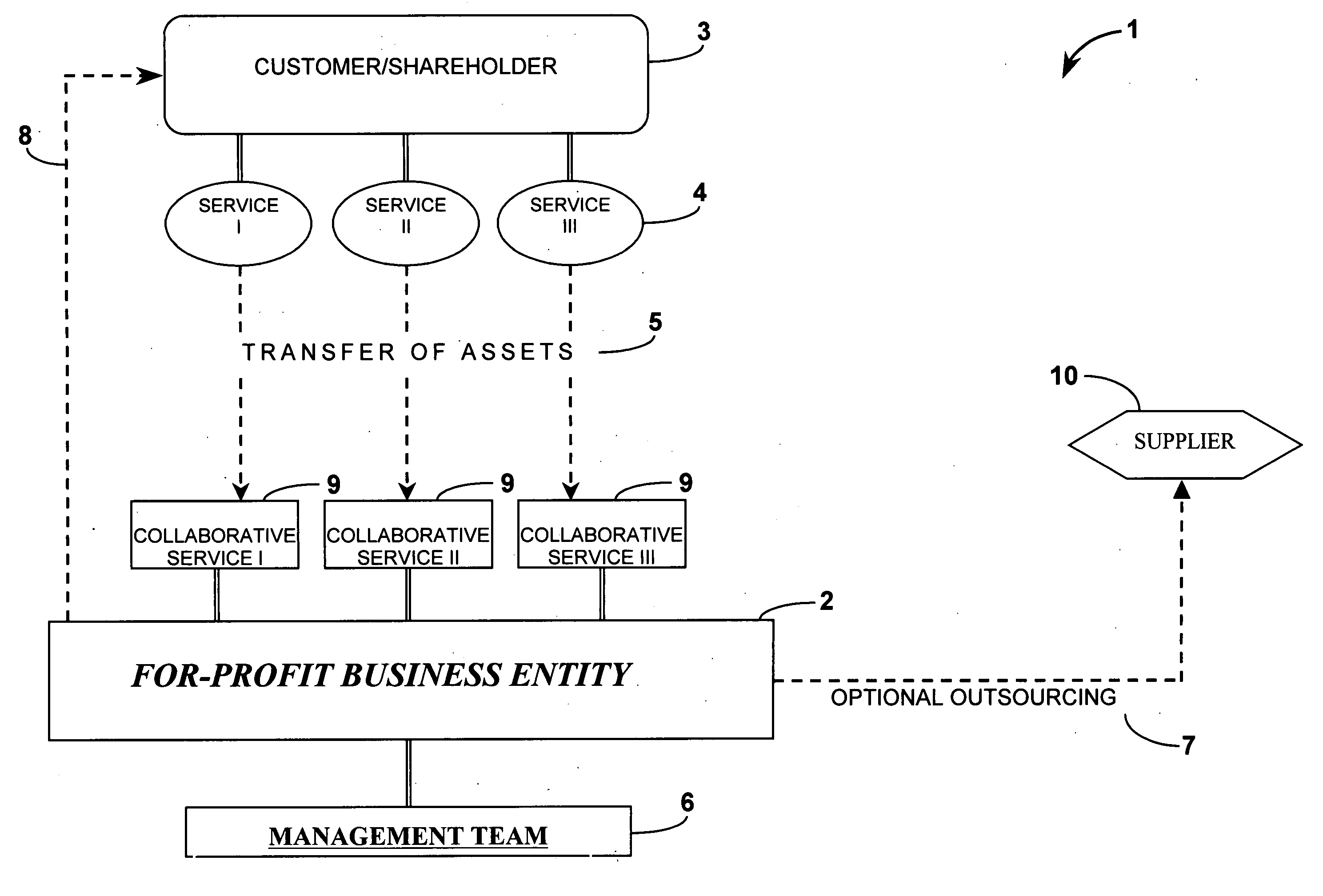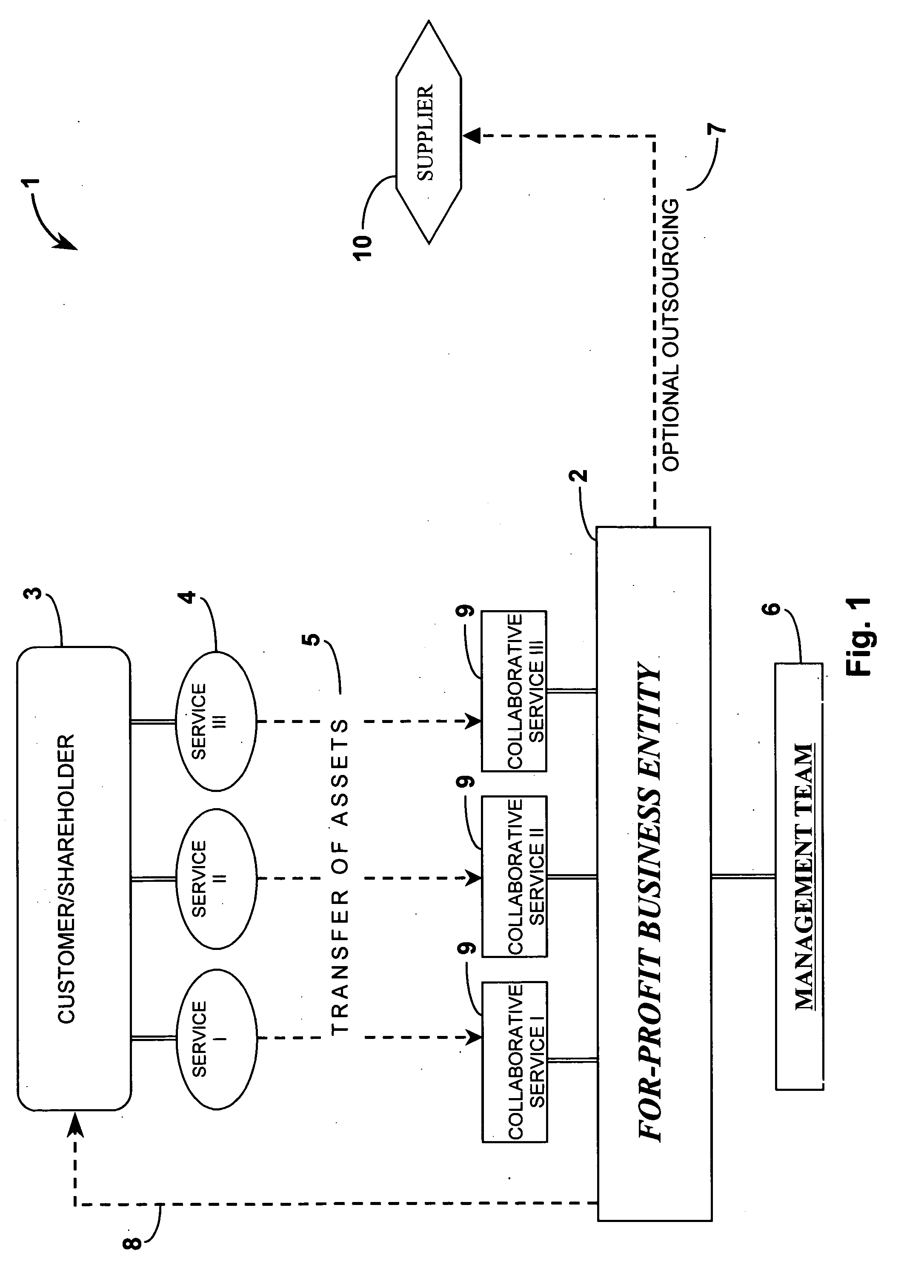Collaborative shared services business system, business processes and method thereof
a business system and business technology, applied in the field of business process services systems, can solve the problems of loss of key business knowledge, increased training and retention costs, and reduced financial visibility to operations, and achieve the effect of increasing the visibility of financial information to operations
- Summary
- Abstract
- Description
- Claims
- Application Information
AI Technical Summary
Benefits of technology
Problems solved by technology
Method used
Image
Examples
example 1
[0071]
AMOUNTDEFERRALBudgeted purchases of services500,000,000Assumed intercompany profit @ 2%10,000,000Budgeted collaborative services costs150,000,000Assumed fees with intercompany165,000,00015,000,000profit @ 10%Prepay 3.5 months of collaborative servicesfees to EntityPrepayment = 3.5 / 12 × 165,000,00050,000,000Assumed account receivables available for200,000,000factoring 200,000,000 × assumed 10%20,000,000factoring discountTOTAL DEFERRED INCOME95,000,000TAX RATE40%TAXES DEFERRED38,000,000
[0072] Some other examples of tax deferrals available to shareholders if Subchapter T applies include, but are not limited to: permanent deferral of intercompany profit on purchases of services by the shareholders from the Entity; permanent deferral of intercompany profit on collaborative shared services provided by the Entity to its shareholders; permanent deferral for prepayment by the shareholders to the Entity of approximately 3½ months of collaborative service fees; permanent deferral of inte...
PUM
 Login to View More
Login to View More Abstract
Description
Claims
Application Information
 Login to View More
Login to View More - R&D
- Intellectual Property
- Life Sciences
- Materials
- Tech Scout
- Unparalleled Data Quality
- Higher Quality Content
- 60% Fewer Hallucinations
Browse by: Latest US Patents, China's latest patents, Technical Efficacy Thesaurus, Application Domain, Technology Topic, Popular Technical Reports.
© 2025 PatSnap. All rights reserved.Legal|Privacy policy|Modern Slavery Act Transparency Statement|Sitemap|About US| Contact US: help@patsnap.com



